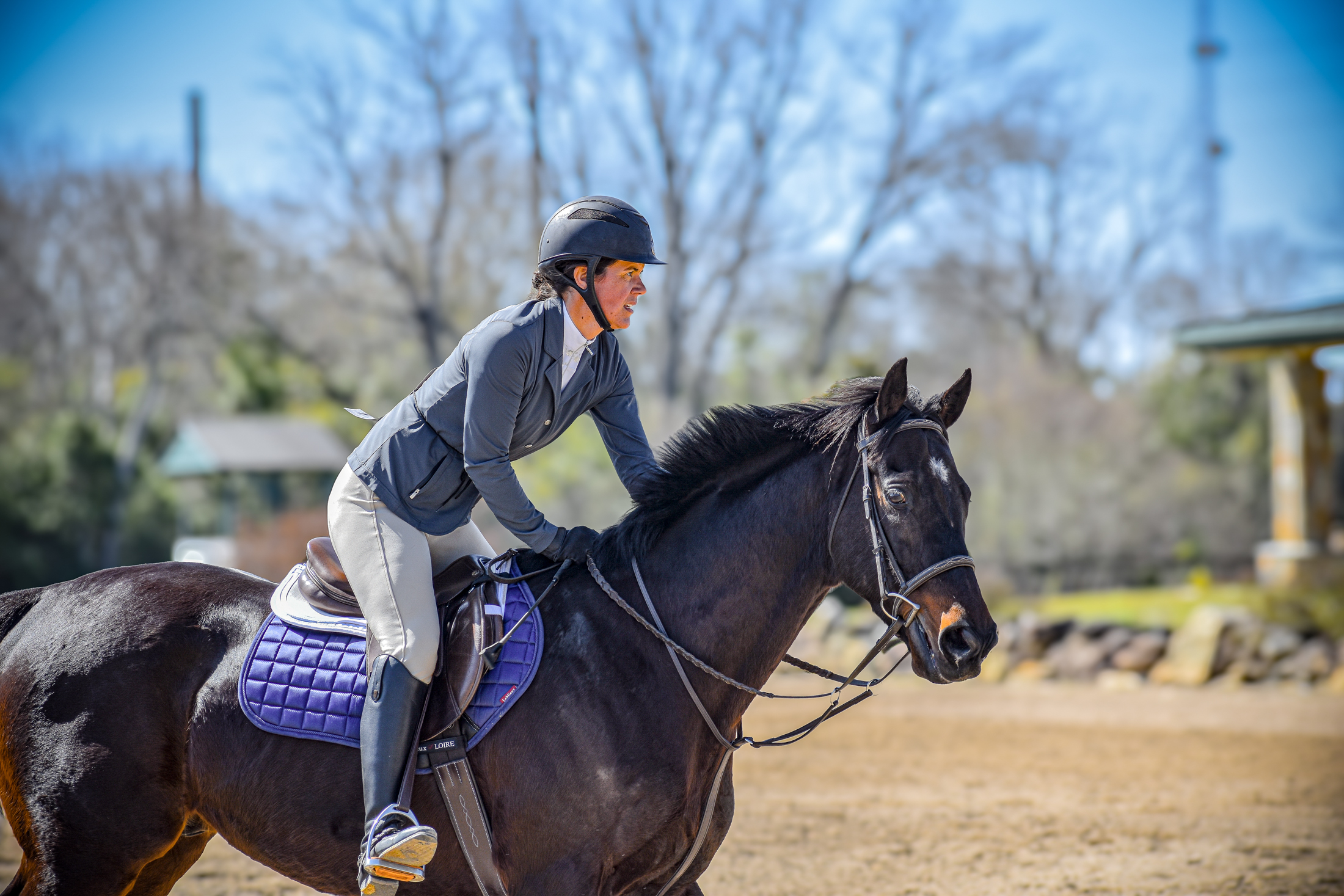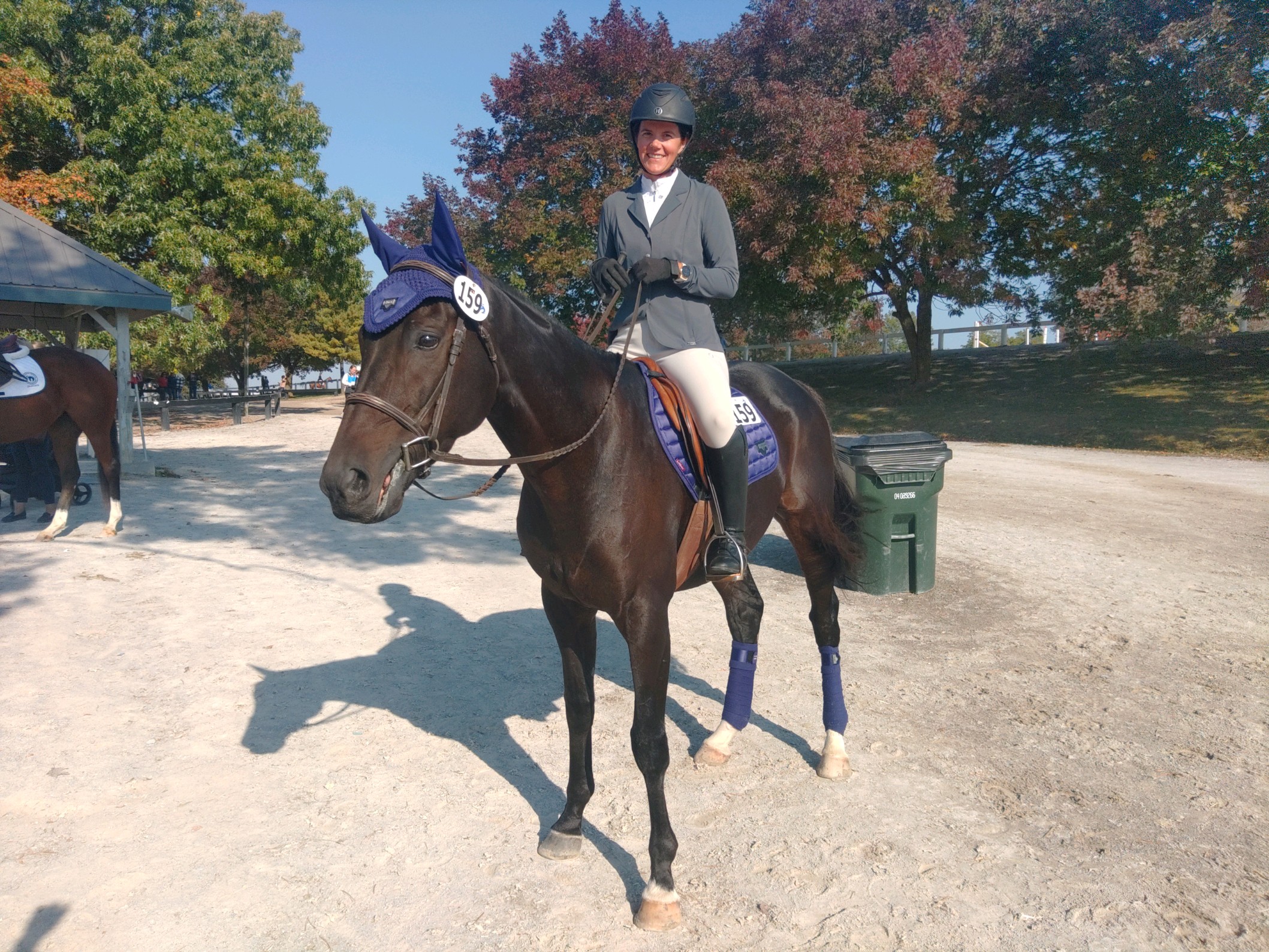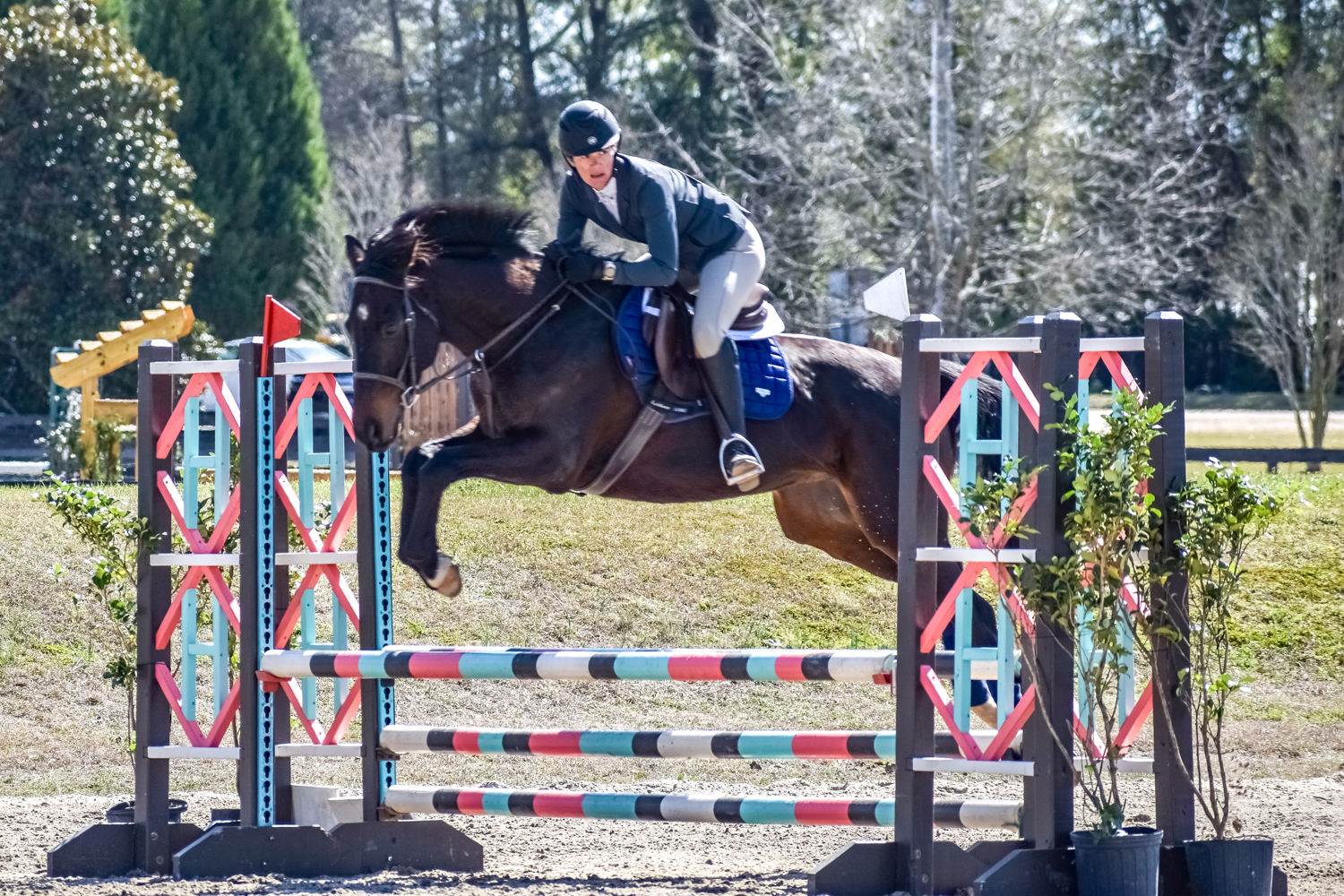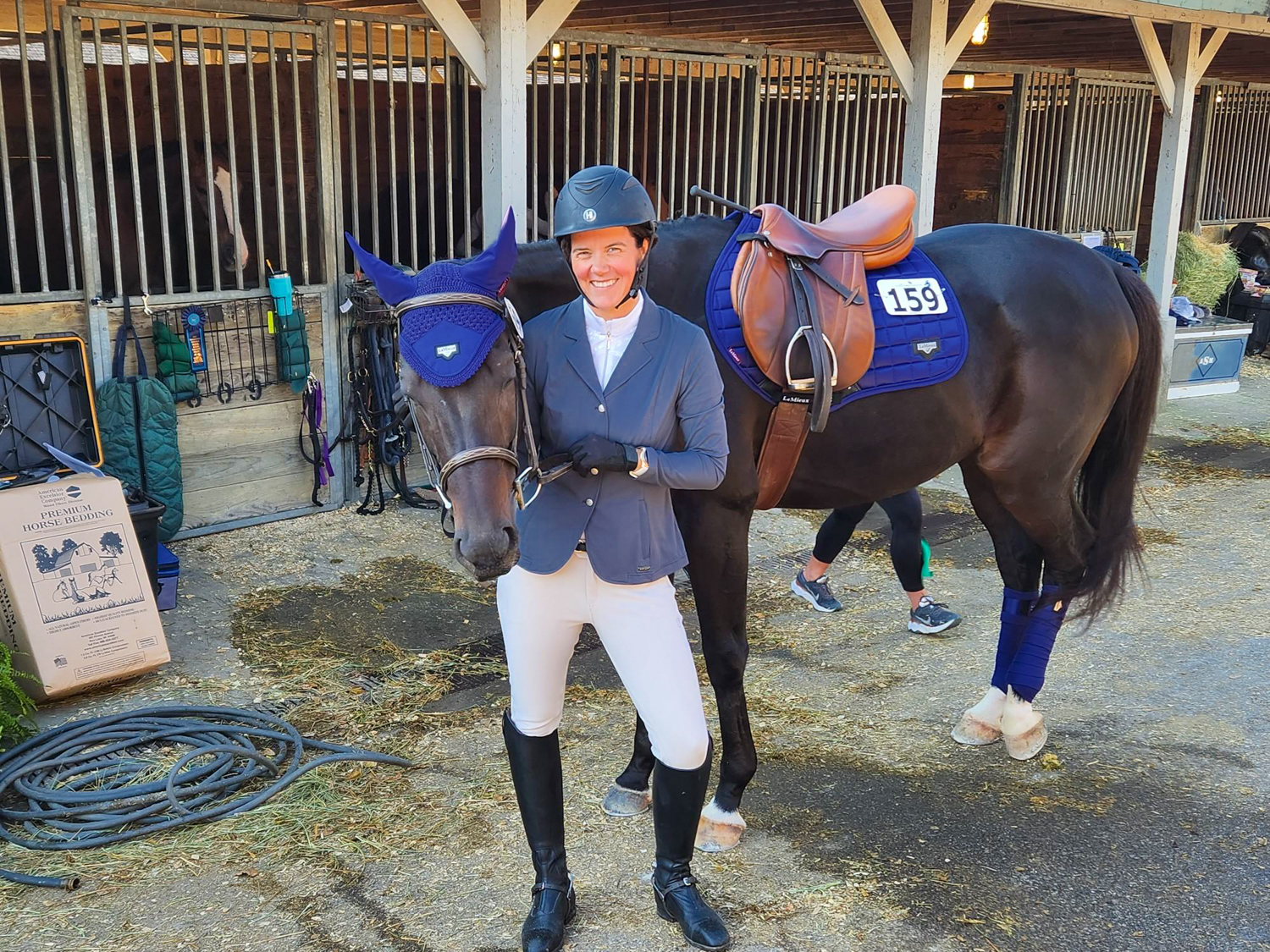More results...
Cambi Lion: A Racehorse’s Journey to the Hunter Jumper World
Cambi Lion: A Racehorse’s Journey to the Hunter Jumper World
By: Alexis Arbaugh

Chelsea Whalen previously had some experience training and retraining horses but had never worked with an off-the-track Thoroughbred. She embraced the challenge of transitioning a former racehorse into a Hunter Jumper. Chelsea found her perfect match at New Vocations Racehorse Adoption Program. Many of the horses that go to New Vocations are put into a retraining program for a new discipline when they arrive.
Chelsea had a list of specific criteria for her potential horse. She sought a horse under 5 years old with clean x-rays, “a horse who was more uphill,” and one with a graceful gait. She was able to check everything off her list when she was introduced to Cambi Lion, a 2018 Medaglia d’Oro. He had raced only a few times, with five starts but some substantial earnings in his short career, having raced at Saratoga, Belmont Park, and Gulfstream Park. He was stunning—a tall, dark bay gelding who looked like the perfect candidate to become Chelsea’s new partner.

After unloading from a quiet trailer ride, Chelsea settled him into his new stall to acquaint him with his surroundings. This allowed him to look around the barn and see other horses while being safely confined to a stall. Following his initial settling-in period, Chelsea took him for a walk around the property, allowing him to familiarize himself with the entire barn and its surrounding area. Over the first week or so that Cambi Lion was at the farm, he progressed to being turned out with other horses and settled into his new night turnout routine.
Unfortunately, Cambi Lion had a broken splint bone and needed to be on stall rest for about two months before Chelsea could start working with him. Once the two months were up and he was fully healed, Chelsea began the retraining process, both in the saddle and on the ground.
Under-saddle work represents half of the challenge in training a horse; the other half lies in groundwork. Despite Cambi Lion’s familiarity with various handling tasks, it remained crucial to consistently work on ground manners to ensure continued good behavior. Thanks to Chelsea’s continuous effort, Cambi Lion now has excellent ground manners and tolerates many situations.
Although most horses typically begin with lunge line training before starting under saddle work, Chelsea’s vet recommended skipping this step and proceeding directly to riding. The recommendation was based on Cambi’s a broken splint bone, with the vet believing that lunging would put more strain on the bone compared to riding. Additionally, since Cambi was on stall rest, Chelsea would have more control of him under saddle than on a lunge line. During the initial weeks, she focused heavily on pressure and release techniques, primarily centered around prompting Cambi Lion to respond to her leg aids. “The start of the retraining process begins with riding on the flat,” wrote Chelsea. Retired racehorses also require instruction on how to respond to rein cues for steering within a new discipline, a skill that often needs perfecting after a horse comes off the track. Chelsea began teaching Cambi Lion that the reins served as a means to guide him in the desired direction, hoping he would catch on quickly.
While Chelsea couldn’t pinpoint a specific moment when she felt Cambi Lion was ready to start jumping, she vividly recalls the methodical approach she took in preparing him. “Arguably, I started training for jumping disciplines as soon as I began riding,” wrote Chelsea. Their journey began with practicing over ground poles and then building from there. Ground poles are a great way to get a horse used to going over something and to learn not to get nervous or anxious about it. As his “confidence grew and his strength improved,” Chelsea then worked with small jumps and continued to raise the height. When Cambi Lion was ready, he was able to cruise around small courses without a problem. Jumping quickly became enjoyable for Cambi Lion, showcasing both his enthusiasm and natural talent for his new sport.
SEE RELATED RE-TRAINING TIP FEATURE:
“How to Teach Your Retired Racehorse to Jump”
Retraining an off-the-track Thoroughbred demands significant effort and patience, even for the most seasoned trainer. Chelsea had the honor of working with a close training friend of hers, Freda Jessen. Freda, having worked with numerous ex-racers throughout her career, was an experienced trainer in seamlessly transitioning OTTBs to new careers. In addition to Freda’s guidance, Chelsea had assistance from another trainer friend, whose expertise further facilitated Cambi Lion’s progression into the hunter/jumper world. Given the dangerous nature of training a horse alone, it is safer and easier to work with someone who has a background in it.


Cambi Lion was doing so well that Chelsea decided to take him to his first horse show just three months into his retraining. She hadn’t initially intended to show him; rather, she brought him along to acclimate him to the atmosphere of a horse show. Impressed by Cambi Lion’s exceptional calmness, Chelsea decided to enter him in his very first flat class. Cambi Lion remained remarkably composed while at the show and in the show ring. After approximately five months of dedicated training, Cambi Lion entered his first real jumping competition. Chelsea was confident in his ability to both behave and perform well. Observing Cambi Lion’s growing confidence at home over jumps and his increasing comfort with off-site adventures, Chelsea recognized that he was ready to begin his show horse career.
Do you have a success story that you would like to share?
Submit your experience with an accredited organization here:






